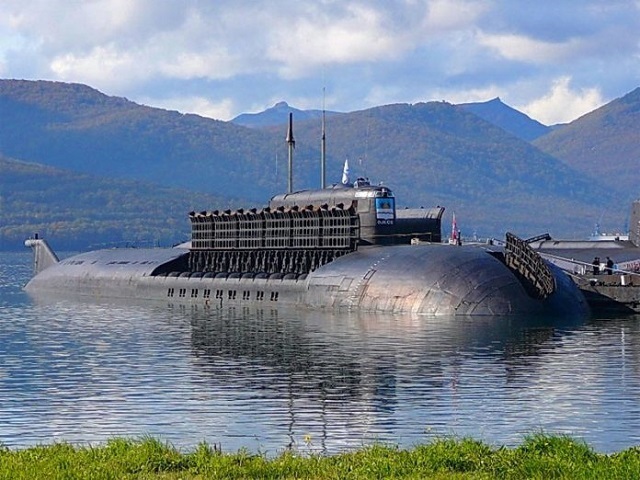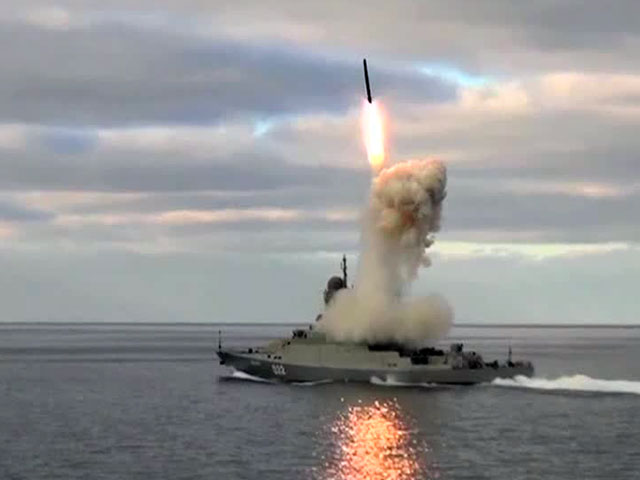|
|
|||
 Russian Navy submarine Omsk (K-186), a Project 949A SSGN (NATO designation: Oscar II), with all missile hatches opened. The class is being modified to launch Kalibr SLCM. Picture via airbase.ru Russian Navy submarine Omsk (K-186), a Project 949A SSGN (NATO designation: Oscar II), with all missile hatches opened. The class is being modified to launch Kalibr SLCM. Picture via airbase.ru |
|||
|
|
|||
| According to the document, the main objectives in the field of the Russian Navy construction and development are to form balanced naval forces, maintain the combat potential of the naval component of strategic nuclear forces at a high level and build a qualitatively new configuration of general-purpose naval forces equipped not only with new and modernized weapons, but also with new and modernized military and special equipment. The decree notes that one of the priorities in the Navy’s fleet construction and development program in the medium and long term is to build up the fleet capabilities by building and upgrading attack nuclear submarines armed with missiles and torpedoes and diesel-electric submarines, guided weapon surface ships of different classes, naval aircraft, and various surface effect ships. One of the main strategic requirements for the Russian Navy is to "integrate interconnected and unified naval armament systems, ships, submarines, naval aircraft and coastal facilities into a single control loop." The decree especially emphasizes the need to completely switch the development and production cycle for key components of weapons and military equipment in the interests of the Navy to Russia’s scientific and industrial foundation. |
|||
|
|
|||
 Range of Kalibr family of cruise missile (scale models) on display at IMDS naval defense exhibition in Russia. Range of Kalibr family of cruise missile (scale models) on display at IMDS naval defense exhibition in Russia. |
|||
|
|
|||
| Among the main goals of the naval activities to prevent military conflicts and provide strategic deterrence, according to the decree, is to enable the use of precision-guided long-range weapons by the Navy ships against any potential enemy, to perform inter-theater maneuvers, including regular submarine voyages under the ice, to increase the combat and operational capabilities of the Black Sea Fleet through the development of a joint force grouping in the Crimea and to provide a continuous naval presence of the Russian Federation in the Mediterranean and other strategic areas of the world's oceans. "With the development of precision-guided weapons, the Navy faces a qualitatively new challenge: destroying the enemy's military and economic potential by hitting its vital facilities from the sea. The availability of a sufficient number of precision-guided weapons and the capability of using them in various ways will deter large-scale military operations against the Russian Federation. The key components of the strategic deterrence system are nuclear and non-nuclear deterrence. The general-purpose naval forces occupy an important place in meeting strategic deterrence challenges," the document says. © Copyright 2017 TASS. All rights reserved. This material may not be published, broadcast, rewritten or redistributed. |
|||
Presidential Decree Calls for More Cruise Missiles and Balanced Fleet for Russian Navy
- Posted On











